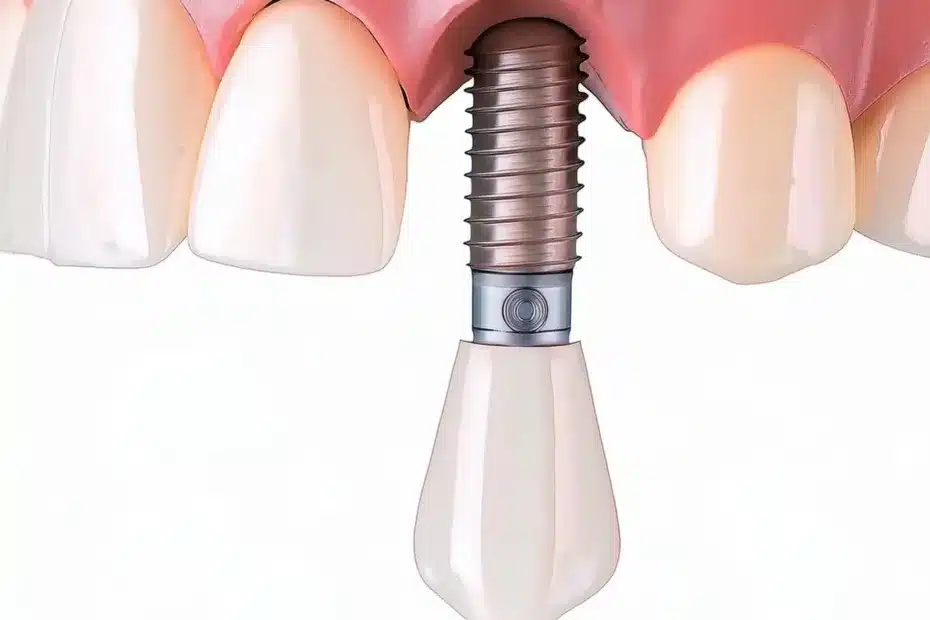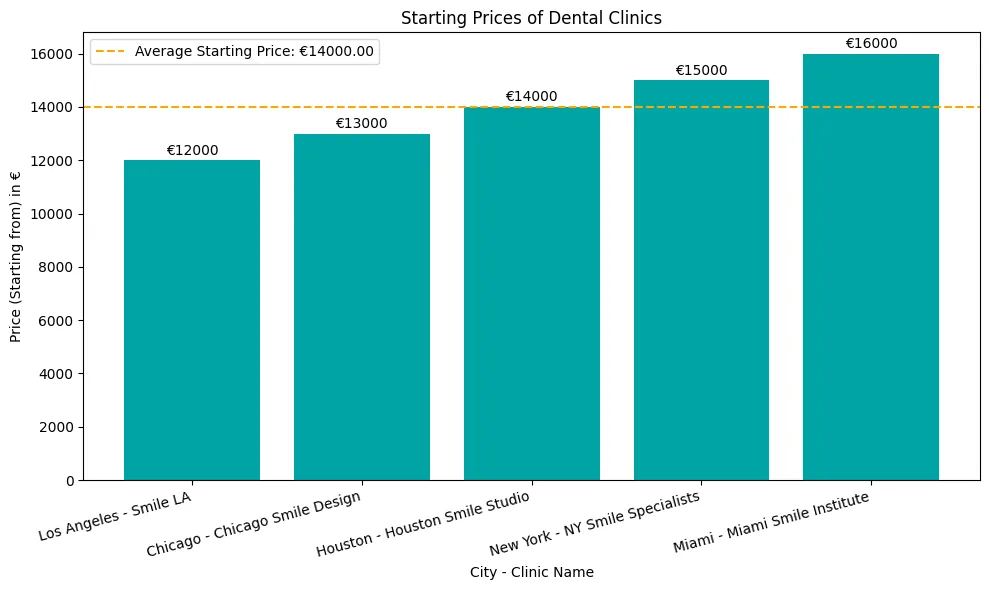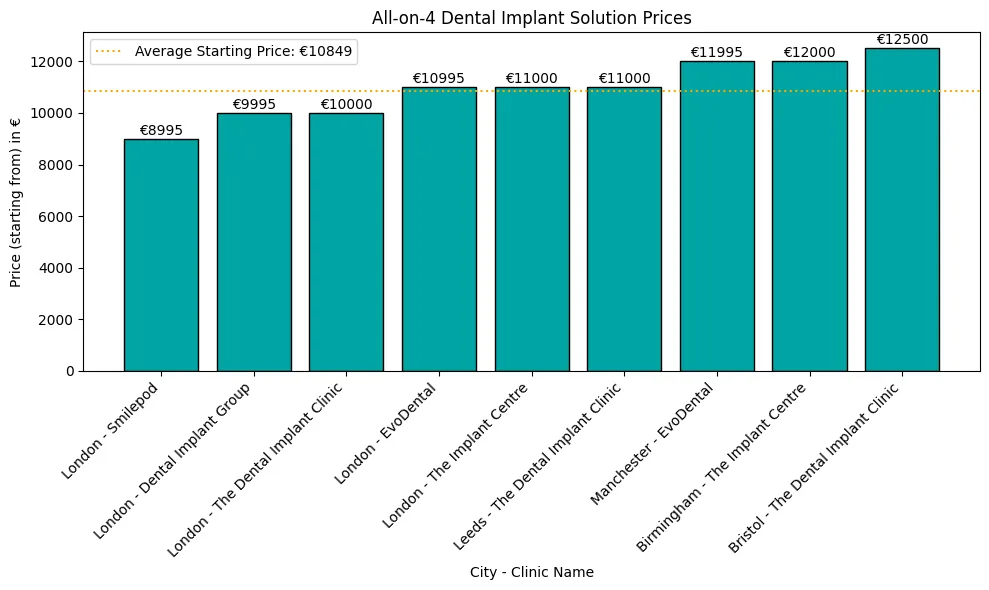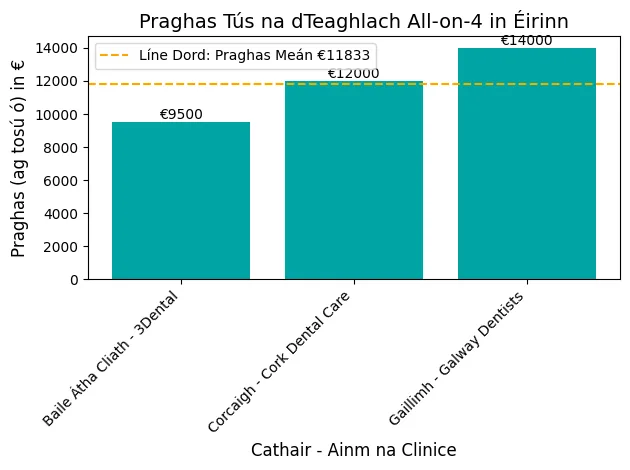Ceramic dental implants are the solution for those with metal allergies or wanting a more natural look in dental restorations.
If you’re wondering if ceramic implants materials are for you, here’s everything you need to know, including the benefits and how they compare to traditional options.
What Are Ceramic Dental Implants?
Ceramic dental implants are zirconia-based, metal-free tooth replacements offering natural aesthetics and biocompatibility. With a 95% survival rate after 5 years, they’re ideal for patients with metal sensitivities or those seeking aesthetic restorations, especially for front teeth. While more expensive than titanium, ceramic implants provide excellent osseointegration and reduce the risk of allergic reactions.

The Ceramic Dental Implant Procedure
Initial Consultation and Assessment
The first step in the ceramic dental implant process is an initial consultation with a dental specialist.
During this visit, the dentist will assess the patient’s oral health, including bone density, gum condition, and overall suitability for implants.
Advanced imaging techniques such as 3D cone-beam computed tomography (CBCT) are often used to get a detailed view of the patient’s jawbone structure.
A study found that the use of CBCT improves the accuracy of implant placement by providing precise measurements and identifying potential complications early (1).
Surgical Process
Once the assessment is complete, the surgical phase begins.
The procedure involves placing the ceramic implant into the jawbone where the tooth root would be.
This is done under local anaesthesia, although sedation options are available for anxious patients.
A study on the surgical outcomes of ceramic implants found that the implants have excellent primary stability; 98% of cases achieved immediate postsurgical success (6).
After the implant is placed, a healing period of 3 to 6 months is required, during which the implant integrates with the bone through osseointegration.

Recovery and Aftercare
Post-surgical recovery is a critical phase for ceramic implants.
Patients are advised to follow a soft diet for the first few weeks and to maintain good oral hygiene to prevent infection.
A study found that patients who followed a strict aftercare protocol had a 15% lower risk of postoperative complications such as peri-implantitis (4).
Regular follow-up appointments are necessary to monitor the healing process and ensure the implant integrates properly. If all goes well, the final prosthetic tooth can be placed after the healing period and the restoration is complete.
Ceramic Dental Implants Advantages
Ceramic dental implants are gaining popularity because of several advantages over traditional titanium implants.
Aesthetic Benefits
Ceramic implants are preferred for their natural tooth-like appearance.
The white colour of zirconia matches the natural tooth shade, making it perfect for front teeth restorations where aesthetics are key.
Titanium can sometimes show through the gumline in thin tissue areas; ceramic implants blend in seamlessly with the mouth for a better cosmetic result.

Biocompatibility and Health Considerations
Ceramic implants are highly biocompatible, meaning they integrate well with the human body.
Studies have shown that zirconia induces minimal inflammatory response and has lower risk of allergic reactions compared to metal implants (1).
This makes ceramic implants suitable for patients with metal sensitivity or those who want to avoid long-term health risks associated with metal exposure.
Durability and Strength compared to Titanium
While titanium has been the standard for decades, zirconia implants have been proven to be equally durable in clinical studies.
A five-year cohort study found that ceramic implants have a 95% survival rate over five years, similar to titanium (2).
Zirconia’s corrosion resistance and wear resistance add to its long-term strength, making it a reliable option for dental restorations.
Ceramic Dental Implants Drawbacks
While ceramic dental implants have many advantages, there are also some disadvantages to consider.
Cost compared to Titanium Implants
Ceramic implants are more expensive than titanium implants.
According to recent studies, the cost of ceramic implants can be up to 30% higher due to the more complex manufacturing process and the material’s premium nature (3).
In Europe the average cost of a ceramic implant is between €1,500 and €2,000, while titanium implants are between €1,000 and €1,500. This is a big difference for some patients.

Availability and Provider Expertise
One of the challenges with ceramic implants is their limited availability.
Not all dental clinics offer ceramic implants and finding a provider with experience in placing them can be hard.
In fact, a survey found that only about 20% of implant specialists use ceramic implants regularly (4).
This lack of experience can impact the success rate and patient satisfaction so it’s crucial to choose an experienced provider.
Longevity and Clinical Studies
While ceramic implants have shown good results, the long-term data is still emerging.
Short-term studies show a similar survival rate to titanium, but most of the available data is only for 5 years.
Longer-term studies are needed to see how ceramic implants perform over decades.
One study noted that while ceramic implants show good initial stability, there is a need for more clinical trials to evaluate long-term success and complications (5).
Ceramic vs Titanium Dental Implants
When deciding between ceramic and titanium dental implants, you need to consider several factors that can impact the success and longevity of the implants.
Material differences
The main difference between ceramic and titanium implants is the material.
Titanium implants are made of a metal alloy which has been the industry standard for decades due to its high strength and excellent osseointegration properties.
Ceramic implants are made of zirconia, a non-metallic, biocompatible material that looks more natural.
A study comparing the materials found that both materials integrate well with bone but zirconia had lower affinity for plaque accumulation, which can reduce the risk of peri-implant diseases (6).

Performance in different conditions
The performance of dental implants can vary depending on the conditions they are placed in.
Research shows that titanium and zirconia implants perform well in most clinical conditions, especially in patients with dense bone.
But ceramic implants perform better in aesthetic zones and in patients with thinner gum tissues where the metal can be visible through the tissue (2).
A meta-analysis also found that ceramic implants might be better for patients with metal allergies as they don’t elicit the same inflammatory response as titanium implants (4).
Patient suitability
Patient suitability is another factor to consider when choosing between ceramic and titanium implants.
A systematic review found that patients with metal hypersensitivity or those who want a more aesthetic result benefit more from ceramic implants.
Patients with complex dental needs like multiple implants or compromised bone quality may find titanium implants more durable and reliable (5).
This highlights the need for personalized treatment planning to get the best results for each patient.
| Feature | Ceramic Implants | Titanium Implants |
|---|---|---|
| Material | Zirconia (ceramic) – non-metallic | Titanium – metallic |
| Aesthetic Appearance | Natural tooth-like color, blends seamlessly | Metallic gray, may show through gums |
| Biocompatibility | Highly biocompatible, lower inflammatory response | Excellent biocompatibility, rare allergies |
| Durability | Durable, but less flexible | Highly durable, resistant to fractures |
| Cost | More expensive, up to 30% higher | Generally more affordable |
| Patient Suitability | Ideal for metal allergies, aesthetic zones | Suitable for most patients, especially with strong bone |
Are Ceramic Dental Implants for You?
Things to Consider
When choosing ceramic dental implants, you need to consider the pros and cons based on your situation.
For example, patients with metal hypersensitivity may find ceramic implants more suitable as they are biocompatible and metal-free.
Research shows that nearly 10% of patients have allergic reactions to metals used in dental restorations, so ceramic implants are a safer option for these individuals (6).
Patients who prioritise aesthetics, especially for visible front teeth, often prefer ceramic implants for their natural look.
Conclusion & Key Takeaways
Key takeaways:
Aesthetics: Ceramic dental implants look more natural, especially for front teeth, due to its tooth colour and metal-free design.
Biocompatibility: Ceramic implants are highly biocompatible, reduce allergic reactions and inflammation, and are good for patients with metal sensitivities.
Durability: Studies show ceramic implants have the same success rate as titanium implants; many are long-term stable and functional.
Cost: Ceramic implants are more expensive than titanium, due to the material and the procedure.
Patient suitability: suitable for patients who want aesthetics, metal allergies, or non-metallic restorations.
Conclusion:
Ceramic dental implants are a great alternative to traditional titanium implants.
Although more expensive and limited in availability, the biocompatibility and aesthetics make it a good option for many patients.
When considering ceramic implants, consult with a professional dentist to get the best results for your situation.

FAQ
References
Balmer M, Spies BC, Kohal RJ, et al. Zirconia implants and patient-reported outcomes: A systematic review. Eur J Oral Implantol. 2018;11(Suppl 1)
.
1. Article: Zirconia implants and patient-reported outcomes: A systematic review
Kohal RJ, Knauf M, Larsson B, et al. Survival of zirconia and titanium implants after 5 years: A cohort study. J Clin Periodontol. 2019;46(3):468-476.
Article: Survival of zirconia and titanium implants after 5 years: A cohort study
Andreiotelli M, Wenz HJ, Kohal RJ. Are ceramic implants a viable alternative to titanium implants? A systematic literature review. Clin Oral Implants Res. 2009;20(Suppl 4):32-47.
3. Article: Are ceramic implants a viable alternative to titanium implants? A systematic literature review
Roehling S, Schlegel KA, Woelfler H, et al. Zirconia compared to titanium dental implants in preclinical studies: A systematic review and meta-analysis. Clin Oral Implants Res. 2019;30(4):365-395.
4. Article: Zirconia compared to titanium dental implants in preclinical studies: A systematic review and meta-analysis
Hafezeqoran A, Koodaryan R, Hemmatian R, et al. Clinical outcome of ceramic versus titanium dental implants: A systematic review and meta-analysis. Eur J Oral Implantol. 2017;10(1):51-66.
5. Article: Clinical outcome of ceramic versus titanium dental implants: A systematic review and meta-analysis
Bankoglu G, Schramm A, Huber M, et al. Zirconia dental implants: An analysis of five-year clinical and radiographic results. Clin Implant Dent Relat Res. 2019;21(6):1044-1052.
6. Article: Zirconia dental implants: An analysis of five-year clinical and radiographic results




